
By Jim Hynes
Photos by Arnold Goodman
“The masters gave us nothing but encouragement. They pushed us”, said Sugar Ray Norcia, of Sugar Ray & the Bluetones. “Whether it was Big Walter Horton, Johnny Shines, or especially Roosevelt Sykes, they not only spurred us on but asked us to back them when they came to town.”
Duke Robillard similarly recalls the early days of Roomful of Blues, in 1967: “We never wanted to mimic our icons; instead we felt it was important to ‘play in the style,’ and that approach led to situations where we backed Big Joe Turner, Arthur Prysock, Jay McShann and others.”
Likewise, around that same time, David Maxwell recalls going to Club 47 in Cambridge, MA to hear Muddy Waters and Otis Spann, only to be backing Waters, Freddie King, John Lee Hooker and Otis Rush just a few years later. One night, Maxwell even replaced an ill Spann in the piano chair at a Waters’ gig.
Even after this fertile period of mentorship that was at its peak during the ’70s and ’80s, I once witnessed Buddy Guy playing two full sets with James Montgomery at the latter’s album release party in the basement of a church in Peabody, MA.
Be it Norcia, Robillard, Maxwell, Montgomery—or Ronnie Earl, J. Geils, Susan Tedeschi and more—the forefathers and torchbearers of New England blues formed a chemistry with the genre’s older masters that is essential to their music. New England blues is based in community and purity born out of deep respect for the art form.
Today, several of these artists, even as veterans, are producing some of the best albums of their storied careers. In the past few months alone, we’ve heard excellent new releases form Ronnie Earl & the Broadcasters (Good News), Sugar Ray & the Bluetones (Living Tear to Tear) and the Duke Robillard Band (Calling All Blues). As you listen to these three albums, all culled from a variety of influences, the common element is indeed purity. None of them rely on gimmicks. Earl, for example, uses no guitar effects and simply plays directly into the amp. Likewise, Norcia’s new release has a live, raw feel, even more so than his previous releases. And Robillard, ever the teacher, is reminding us, on his new album, how blues is the core ingredient in all kinds of musical forms.
The Core of the New England Blues Community
How did these New England blues artists get started? Like most soon-to-be artists, they were exposed to musicians in their own families and records around the house. Unlike most soon-to-be artists, they were exposed to exceptional, trailblazing events like Newport Folk and Jazz, as well as first-rate clubs that had the foresight to bring in artists like Muddy Waters and John Lee Hooker. Clubs like Lupo’s in Providence, RI, the Knickerbocker in Westerly, RI, the Shaboo Inn in Willimantic, CT and, later, even the House of Blues in Cambridge gave these players plenty of opportunities. The uniquely large amount of colleges in the area also certainly played a role in the formation of the New England blues community in the ’60s and ’70s.
As for the foundational records and family members that first influenced Norcia, he points to the works of Little Walter and Elmore James as his blues conversion point, along with his dad, a great harmonica player. As for the special community of the New England blues scene, Norcia’s neighbor, blues heavyweight Johnny Nicholas, introduced him to Big Walter, Johnny Shines and Roosevelt Sykes. Similarly, Norcia and Robillard, who still collaborate often today, used to go out, in their early days, to see icons like Muddy Waters live and then spending the rest of the night listening to records.
Norcia and his guitarist, Monster Mike Welch, believe that their new album, Living Tear to Tear, does the best job of any of their records in capturing the band’s pure live sound (the album has no guest stars—just the band showing what it can do). Welch, 20-25 years younger than his bandmates and thus not of the first generation of New England blues players, says that the Bluetones were his favorite band even years before he joined. While playing in clubs as a teenager, at a time when most blues fans gravitated toward the Texas style of Stevie Ray Vaughan, Welch’s main inspiration was the New England style of Ronnie Earl.
Earl (born Ronald Horvath) grew up in Queens, NY before attending Boston University. It was during his time in Boston that he decided to become a blues guitarist, taking the surname Earl from blues guitarist Earl Hooker. While Earl’s presence was absolutely vital to Roomful of Blues and the Bluetones—two of the building block bands of New England blues—today he records and performs only with his band, the Broadcasters, whose current lineup has been in place since 2002. With outstanding recent performances at the Blues Music Awards in Memphis, Tremblant International Blues Festival and the Pennsylvania Blues Festival, Earl’s playing on Good News now has a passion and spirituality that’s been refined over the years, born of influences including Otis Rush, Magic Sam, Thelonious Monk and John Coltrane. Moreover, Earl is proud to be clean and sober for the past 25 years and seems to be handling his bipolar condition well, intent on conveying positive energy in a “spread the love” kind of way.
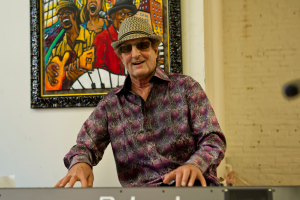
While Earl was converted to the blues in his college years, David Maxell was introduced to both blues and jazz in primary school, by his English teacher. As a teenager, Maxwell then started hanging around Boston with Alan Wilson, who later went on to form Canned Heat. Soon starting his long, acclaimed career as a session man, Maxwell has played with more blues legends than perhaps anyone else from the New England scene, including Freddie King, Susan Tedeschi, J. Geils, James Cotton, Johnny Nicholas, Bonnie Raitt and many more. Earlier this month, in fact, Maxwell collaborated with former Bostonian bluesman Rob Stone, on the latter’s new album, Gotta Keep Rollin’.
Unlike Maxwell, with his long list of collaborators, Chris Vachon, inspired to take up the blues when listening to B.B. King’s Live at the Regal at age 13, has been with his one band, Roomful of Blues, for 24 years. After Vachon’s previous band opened for Roomful at Narragansett, RI’s Bon Vue, his succession of Ronnie Earl in Roomful’s guitar chair was more than five years in the making (one can only imagine those auditions at Lupo’s in Providence). Norcia soon joined Vachon in Roomful, which has had over 50 members in its 46 years, with sax player Rich Lataille as the only original member of the band helps make up the bedrock of New England blues.
The Reach of New England Blues: Artists that Have Collaborated with Norcia, Maxwell, Earl or Robillard
More so than Vachon, Norcia, Earl, Maxwell and all the others, Duke Robillard is the linchpin that holds the New England blues community together. While the Boston players generally gravitated toward the Chicago sound, Robillard and Vachon, both Rhode Islanders, were most heavily influenced by Texas blues players like Gatemouth Brown, T-Bone Walker and Lowell Fulson, along with the Kansas City horn bands fronted by the likes of Big Joe Turner and Jay McShann. According to Robillard, “When Jimmie Vaughan came up here, he said, ‘You guys play like we do in Texas—how is that?’” In the New England blues tradition of education from the masters, Robillard and other New England artists soon had the chance to work with their blues heroes. Robillard has produced records for the likes of Jimmy Witherspoon, Joe Louis Walker, Sunny Crownover, Billy Price, Otis Clay and, recently, for the soon-to-be-released recordings of Billy Boy Arnold, featuring Robillard’s band and the Roomful of Blues horns—collaboration continues.
After getting the calling at six years old while listening to a Fats Domino record, Robillard quickly became an avid record collector, and, in the communal spirit of New England blues, an avid record sharer. “When cassettes were around, I used to make tons of them so that these guys could listen to the stuff I was digging,” Robillard said. Furthermore, he credits several of the area’s unique blues venues and events—including Providence’s Celebrity Club, the Newport festivals and the numerous coffee houses and beach bars—with helping to start both his career and the New England blues movement itself.
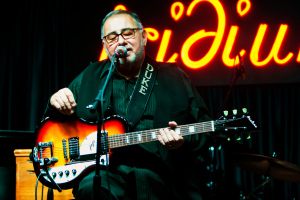
Robillard’s new release, Calling All Blues (out today), was recorded just as he finished his gig as Bob Dylan’s touring guitarist. In true New England blues fashion, Robillard is joined by the horn section from Roomful of Blues on four of the album’s tracks. Overall, Robillard describes the album as “very diverse, some blues and a bunch of things that blues influences, from rock to soul to R&B. We journey through these styles as we hit many of the sounds of the cities and states where these blues and soul styles developed.”
Among all these cities and states, it would be difficult to identify any other region, besides the pillars of Chicago, Memphis and the Delta, with a blues community that upholds the genre’s traditions with both the longevity and ongoing vitality of New England. That said, many of the ingredients that fostered the New England blues movement—venues and festivals with the foresight to bring in blues legends; numerous colleges with thriving music scenes; avid record listening, collecting and sharing—have largely diminished today. Yet, confidence breeds confidence, and both Robillard and Norcia believe that the music has been enjoying a resurgence for the past three years or so. These New Englanders have accepted the encouragement they received from both the masters and each other early on, developed their own styles, and kept their bands intact much longer than most, producing some of their best material even today.
Suggested Listening
Sugar Ray Norcia – Living Tear to Tear (Severn, 2014), Little Boy Blue with Walter Horton (JSP, 1980)
Ronnie Earl – Good News (Stony Plain, 2014), Smoking with Norcia and Kim Wilson (Black Top, 1984), The Duke Meets the Earl with Duke Robillard (Stony Plain, 2005)
Mike Welch – Evening with Sugar Ray and the Bluetones (Severn, 2011), These Blues are Mine (Tone-Cool, 1996)
David Maxwell – Blues in Other Colors (Blue Duchess, 2011), You Got to Move with Louisiana Red (Blue Max, 2009)
Chris Vachon (Roomful of Blues) – 45 Live (Alligator, 2013), Dance All Night with Norcia (Bullseye, 1994)
Duke Robillard – Calling All Blues (Stony Plain, 2014), Guitar Groove-a-rama (Stony Plain, 2006), Roomful of Blues (Hyena, 1977)



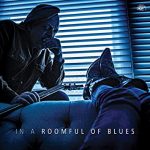
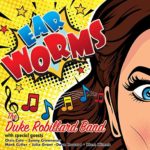
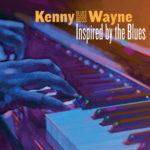

Thanks for the article, Jim, and for covering a lot of bases. For the record, I was not introduced to jazz and blues in primary school. In Lexington, MA, while in high school I studied privately with a great teacher, Saul Skersey, who introduced me to jazz and pop chords, and who also told me not to waste my time on the blues. Previously it had all been classical.While in high school I met Alan Wilson (adjacent towns) and he turned me on to pre war blues (Skip, Son, John Hurt, etc.) and then to post war blues (Muddy, Wolf, Otis Rush, etc.) We both loved jazz and ethnic “world music” and would listen to all kinds of stuff, from Cecil Taylor to Ustad Villayat Khan. Al played trombone in those days and we used to jam jazz stuff in those years. I used to back up Hooker when he came to town— before sitting in with Freddie King at the Jazz Workshop in Boston in 1973 which started my road career. Then, Bonnie, Cotton, Jimmy Rodgers, Otis Rush, Buddy, and backing up people (Big Walter, Johnny Shines) when they came to town at The Speakeasy (with Johnny Nicholas’ Rhythm Rockers) and I also led a house band at Nightstage backing up artists. I sat in with Muddy quite a bit, but, just for the record, was never a member of his band. Otis Spann changed everything for me. Later, another great teacher, Charlie Banacos, opened up a lot more on the jazz side of things.
[…] year, we were lucky enough to spend some time talking with Sugar Ray and the Bluetones about the burgeoning New England blues scene. A fixture among blues fans for over 40 years, Sugar Ray and the Bluetones try their hand at every […]
[…] Can’t Even Do Wrong Right – Elvin Bishop Living Tear To Tear – Sugar Ray & the Bluetones Memphis Grease – John Németh Refuse to Lose – Jarekus Singleton Wrapped Up and Ready – The […]